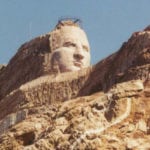 Weird Stuff
Weird Stuff  Weird Stuff
Weird Stuff  Mysteries
Mysteries 10 Tragic Disappearances and Deaths in Joshua Tree National Park
 History
History 10 Ways Childhood Really Sucked in the Old West
 Music
Music 10 Name Origins of Famous Bands from the 1990s
 Religion
Religion 10 Biggest Turnarounds by the Catholic Church
 Weird Stuff
Weird Stuff 10 Unbelievable Times Laws Had Unintended Consequences
 Humans
Humans Ten Historic Women Who Deserve Way More Credit Than They Got
 Movies and TV
Movies and TV 10 Films That Spawned Major Lawsuits
 History
History Ten Times Towns Were Wiped Off the Face of the Earth
 Creepy
Creepy 10 of the Most Disturbingly Haunted Public Houses in the UK
 Weird Stuff
Weird Stuff 10 Niche Subcultures That Are More Popular Than You Might Think
 Mysteries
Mysteries 10 Tragic Disappearances and Deaths in Joshua Tree National Park
 History
History 10 Ways Childhood Really Sucked in the Old West
Who's Behind Listverse?

Jamie Frater
Head Editor
Jamie founded Listverse due to an insatiable desire to share fascinating, obscure, and bizarre facts. He has been a guest speaker on numerous national radio and television stations and is a five time published author.
More About Us Music
Music 10 Name Origins of Famous Bands from the 1990s
 Religion
Religion 10 Biggest Turnarounds by the Catholic Church
 Weird Stuff
Weird Stuff 10 Unbelievable Times Laws Had Unintended Consequences
 Humans
Humans Ten Historic Women Who Deserve Way More Credit Than They Got
 Movies and TV
Movies and TV 10 Films That Spawned Major Lawsuits
 History
History Ten Times Towns Were Wiped Off the Face of the Earth
 Creepy
Creepy 10 of the Most Disturbingly Haunted Public Houses in the UK
10 Cases Of Prejudice Within Ethnic Or National Groups
Racism is a pernicious and recurring problem around the world, the remnant of prehistoric tribalism writ large. It’s an issue that will probably stay with us for a while—at least until Mars attacks. Human discrimination knows no bounds, and there are many cases of entrenched prejudice within ethnic and national groups as well.
10 Burakumin
Japan
Japan is often considered to be an ethnically homogenous country, but it isn’t. Japan is home to the aboriginal Ainu inhabitants of Hokkaido, the Ryukyuans of Okinawa, and the Zainichi from Korea, China, Brazil, and the Philippines. But even within the majority Yamato ethnic group, there is a nearly invisible class of people subject to systematic social exclusion and discrimination.
Buraku and burakumin are terms used to describe areas inhabited primarily by people descended from those at the bottom of the Japanese feudal social ladder: leather workers, executioners, undertakers, butchers, and sewage removalists. They were called eta (“filthy mass”) and were social outcasts due to their links with jobs associated with death and corruption. They formed their own communities called buraku, which means “hamlet,” and became known as burakumin (“hamlet people”), They were forced to wear distinctive clothing and hairstyles, were restricted from rice farming, and suffered a curfew. They were emancipated four years after the Meiji Revolution in 1868.
Today, they make up 1.5–2 percent of the Japanese population, as many as three million people. They are known as “Japan’s invisible race” as they are physically indistinguishable from non-burakumin Japanese but are still widely subjected to discrimination. The problem is barely mentioned in the media or education, but many older companies refuse to employ anyone suspected of coming from a buraku, using background checks to filter out burakumin or use their status as leverage to pay them less or restrict their career.
The majority of the Japanese population are unaware, willfully or not, that the problem exists. Many government agencies prefer to pretend that it doesn’t. But online forums like 2ch, where the bounds of civil conduct are stripped away, show that bigotry toward the burakumin is still a concern. Anti-burakumin graffiti and derogatory expressions like eta, hinin, yotsu (meaning “four,” as in four legs) and dobutsu (“animal”) still cause pain to the buraku community in Japan.
9 Colorism
United States
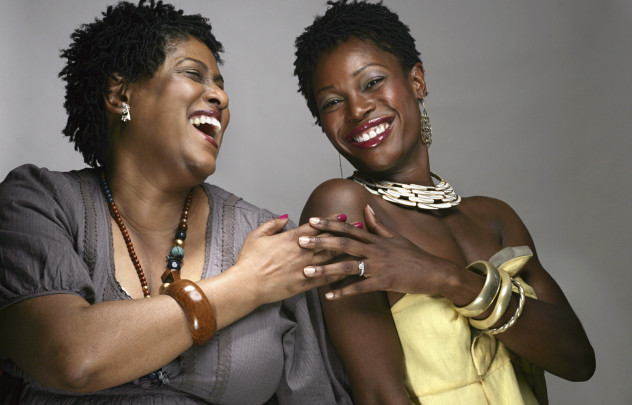
A recurring problem in African-American society is the issue of black-on-black, color-based prejudice. Historically, there has been a preference for lighter skin among African Americans, which dates back to the time of slavery. Some social theorists explain that the mainstream establishment, almost entirely composed of white people, set the standard for correct behavior and appearance, giving preference to black people with lighter skin tones.
These prejudices were later transferred to the black community, due to the fact that African Americans with lighter skin were more likely to be respected and accepted by white Americans. This prejudice also extended to other physical characteristics like hair texture, eye color, and the contour of a person’s mouth and nose.
The situation went the other direction in the 1960s, as black power activists sometimes rejected lighter-skinned black people because of their complexions. However, the patterns remain broadly similar to those from a century ago, if slightly more muted. Research and anecdotal evidence shows that dark-skinned black women are still discriminated against by black men, with one woman in her twenties reporting a potential love interest telling her, “You’re pretty smart and you’re a lotta fun, but . . . I just can’t get too serious with a dark skinned woman. It’s important to me to have light skinned children.”
White people still play a role in exacerbating the problem, as does society in general, with a large wage gap between lighter- and darker-skinned African Americans. Darker-skinned black high school girls are still more likely to be suspended than their lighter-skinned counterparts.
The white role in all this has traditionally been minimized because studies show white people have a reduced ability to perceive variation in black skin, and some have argued white colorism is less important than the overall bias many white people have against black people in general. But colorism is a pervasive problem in American society, and it is more complex than the traditional black/white divide, with both black and white people guilty of sustaining it.
8 North Koreans In The South
South Korea
With increasing numbers of North Korean defectors settling in South Korea, the Seoul government has made much effort to help them resettle and adapt to their new society. Often suffering from physical or mental scars, they find it extremely difficult to adapt to the fast-paced and alien society they have come to.
Many jobs require skills, such as English language ability or proficiency with computers, that the vast majority of North Koreans never had a chance to acquire. This is made worse by mistrust, prejudice, and stereotypes about North Koreans held by many in the South. North Korean defectors are often suspected to be spies, and during tensions with the North, indignant South Koreans will take their anger out on them for lack of a better target.
One refugee reported to NK News, “I was supposed to be hired by a shipbuilding company, but when the spy incident came out, I was suddenly considered suspicious and the offer was rescinded.” After North Korea attacked and sank the naval vessel Cheonan, one performer in a North Korean dance troupe in the South reported a wave of cancellations and even threatening, anonymous phone calls. Despite having escaped from the vicious regime, they are held accountable for its crimes in the land meant to accept them.
Once, most defectors were people like high-ranking officials or rogue fighter pilots, who were useful as propaganda tools. Since the 1990s, there has been a flood of ordinary North Koreans risking their lives to escape to the South, but they are increasingly seen as a liability, risk, and burden. The two Koreas have diverged so much in terms of economics, politics, language, and social organization over the past 60 years that North Koreans in the South are seen as strangers rather than brothers.
Due to this prejudice, many North Koreans are choosing to migrate abroad either legally or with forged identities, finding it more comfortable or promising on the streets of Los Angeles or London than in Seoul, though it is difficult to be accepted for asylum if they already hold a South Korean passport. Some are finding adjusting to life in South Korea so difficult they are even redefecting back to North Korea.
7 Songbun
North Korea
For all its faults and flaws as an ideology, communism is considered at its core to be a system of equality. But neo-Stalinist North Korea possesses an active caste system, known as songbun. The songbun system divides people depending on the actions and status of their ancestors during the revolutionary period, and it determines where a person can live, what jobs they can do, and what education they can receive.
There are five castes in the songbun system: special, nucleus, basic, complex, and hostile. The first is rare, and the fourth was only introduced in the 2000s. The nucleus, or core, is the standard, while people under the basic caste suffer mild discrimination. The complex and hostile castes receive extreme prejudice.
Songbun is calculated through ancestry and social status. Ancestry songbun refers to the social position and actions of one’s paternal ancestors during the Japanese colonial period and the Korean War. Those whose ancestors fought alongside Kim Il Sung are placed in high castes, while those whose ancestors worked for the Japanese colonial administration or a rival political faction are placed in the lower castes. Social status refers to position in North Korean society, which can reflect favorably on calculations of songbun. Being a member of the party helps to raise one’s songbun significantly, as does being “granted an audience,” meaning talking to the Leader or being photographed with him.
There are also many ways to be demoted in songbun, and demotions apply to three generations of an individual’s family. Committing a crime, inadvertently or deliberately insulting the regime (like using a newspaper with a picture of the Leader on it to clean a spill), and professing Christianity are all instant ways to have one’s entire family demoted. In recent years, the power of songbun has started to fade with the rise of black markets and underground capitalism, where money often talks louder than caste.
6 Colorism
India
African-American colorism has a counterpart in Indian colorism, which affects the way Indian people with darker skin are treated as inferior in a systematic and widespread way across all social, economic and, cultural institutions. This is often felt particularly strongly by women, as Indian standards of beauty favor lighter skin. This has led to a massive industry of skin whitening creams and treatments like face cleansers, shower gels, and even vaginal washes. These products are frequently endorsed by sports stars and Bollywood actors. In 2012, Indians consumed 233 tons of such products, spending more on them than on Coca-Cola.
Film star Nandita Das launched the campaign Dark is Beautiful to help combat this trend in society. “Indians are very racist. It’s deeply ingrained. But there is so much pressure by peer groups, magazines, billboards, and TV adverts that perpetuate this idea that fair is the ideal,” she told The Guardian. She even reported seeing an article in an Indian newspaper expressing support for her campaign, but the photo of her they had used had been retouched to make her appear fairer skinned.
Professor Radhika Parameswaran blames cosmetics companies and their marketing for perpetuating the phenomenon:
One of the prominent messages I found was the idea of transformation. So that women have to be constantly monitoring their body actually to see how the product is changing them. They have to become obsessed with change. They can’t be happy with who they are. And this sort of transformation is not permanent, as we know, so you have to keep using the product, because if you don’t, you’ll become darker and lose out on all these opportunities. So the idea of transformation and change and telling women you can only be happy if you are constantly monitoring your body, which is perpetuating a form of everyday anxiety where you get up in the morning and asking, am I darker today than I was yesterday? Oops, I have to keep using this product . . . so perpetuating that anxiety.
When Indian-American Nina Davuluri was crowned Miss America in 2014, it set off controversy in India. There had been a reprehensible racist backlash against Miss Davuluri by a minority in the United States, but many Indians pointed out she would likely have been too dark to compete for the Miss India title, whose most popular winners have all been universally fair skinned.
5 Classism
Great Britain

British society has long been dominated by its class system, which divides the population into the upper, middle, and working classes. British class status is usually determined by birth, education, occupation, income, housing, lifestyle, and the way one uses the English language. Historically, class identity has played an extremely important role in how British people see themselves and each other. George Bernard Shaw put it succinctly in his 1912 play Pygmalion: “It is impossible for an Englishman to open his mouth without making some other Englishman hate or despise him.”
In the 1990s, it was fashionable to declare the class system had been defeated, yet new research has suggested it has merely become more complex. A study by the BBC and academics from six universities determined in 2013 that modern Britain has seven classes: the “precariat” (or precarious proletariat) at the bottom of the heap, “emergent service workers” (who are relatively poor but have higher social and cultural capital), the fading “traditional working class,” the young and vibrant “new affluent workers,” the well-off but socially and culturally isolated “technical middle class,” the “established middle class” (who make up the largest and most influential group), and the wealthy and well-bred “elite” who make up 6 percent of the population.
Some have even argued classism is a worse problem than racism in the United Kingdom, pointing out that poor whites are often much worse off economically and socially than more affluent immigrant groups. This is explained by a cultural tendency to “stay where you are” and “know your station.” According to Janet Daley from the Daily Telegraph, “Different classes are brought up to follow different rules about how to think, talk, and behave.” This reduces incentive for lower-class Britons to better their lot, as they will be judged as traitors and upstarts.
4 The Osu Of Igboland
Nigeria
The Igbo people are found mostly in the area of southeastern and south-central Nigeria known as Igboland. Most are now Christians, but the influence of traditional Igbo beliefs, with their emphasis on an Earth Mother and Creator God, remain strong. One unfortunate side effect of this tradition can be seen in the plight of the Osu, the untouchables of Nigeria.
In traditional Igbo society, the Osu were known by a variety of names but were generally considered as people sacrificed to the gods. This was likely not a literal sacrifice but rather the lower castes were considered slaves to the Creator God. Their general social role was to assist the high priest in serving the deities or the gods at their shrine. However, they were considered abominable and dehumanized by wider Igbo society.
Members of the dominant Diala class refused to marry Osu or even have anything to do with them for fear that they, too, would be turned into an Osu and be dehumanized. The Osu were generally banished from mainstream society and communal village life. They were never the subject of violence due to their somewhat sacred status—just constant shunning.
Though the power of these old traditions has waned over the last 50 years with increased urbanization breaking down the traditional barriers of the village, they haven’t gone away completely. Few Osu will admit to being Osu. Some young people growing up in large cities like Lagos don’t even realize they are Osu until they wish to get married and their parents come out in sudden opposition.
One advantage for some Osu has been that they were forced to make their own way by concentrating on a Western education and becoming some of Nigeria’s foremost doctors and nurses. However, not everyone was so fortunate. Pastor Cosmos Aneke Chiedozie reported his father raised him as a Christian in an attempt to break the Osu cycle, but Cosmos left the church due to pressure from village elders. His continued social ostracism led him to take up a life of banditry until he was thrown into prison and returned to Christianity. With the continued growth of Pentecostal churches and changes in Nigerian society wrought by urbanization, the Osu class may eventually disappear.
3 Appalachians
United States
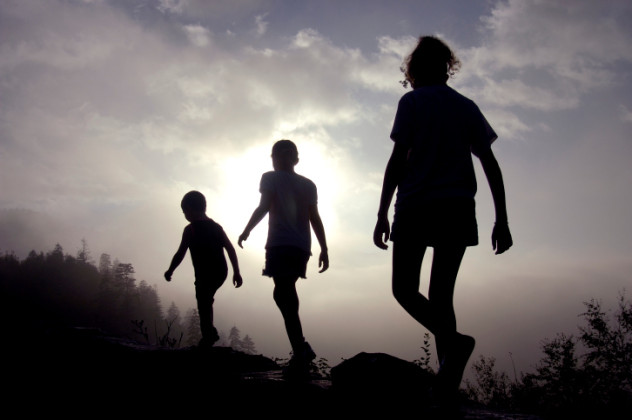
People from the Appalachians have been referred to as America’s “invisible minority.” They are often assumed to be ignorant, backward, and incestuous. Frequent negative stereotypes in the media usually go unchallenged. Much of this is inevitably linked with the Appalachian dialect, which retains elements of Elizabethan English, Scottish, Celtic, and Irish, but is usually perceived as uneducated.
According to a 1994 article, one Appalachian college graduate was filling out forms in a hospital when a nurse noticed her accent and asked, “Do you need help filling those out?” The woman angrily replied, “No, I can read.” It seems that the overall perception of Appalachians as hillbillies and rednecks hasn’t changed over the last 20 years, either.
Many point to the supposedly higher rates of racism among Appalachian populations as a reason to dismiss them as backward. However, studies in Cincinnati have painted a different picture. Many African Americans live among urban Appalachian communities, and there is no evidence Appalachians are any more or less racist than any other urban group. Survey research has found social characteristics of African Americans and Appalachians are more similar than any other group, and there have been positive relationships formed between black leaders and the Appalachian community. That isn’t to say racism doesn’t exist among Appalachians, just that it would be no less prevalent than in other white communities in both the North and South.
In 2014, a debate erupted on an academic discussion board when someone complained about a student walking barefoot on campus. One professor replied “If s/he disrespects his or her peers and the college community enough to (un)dress like a hillbilly here, I would say, then s/he should be prepared to be dismissed as one, in whatever pursuits s/he favors, in the preference of someone more attuned to proper decorum and respectful behavior.”
This set off a debate as to the use of the word “hillbilly,” which is almost inevitably linked to Appalachians, when in fact there was no indication of where the student walking around barefoot actually came from. Some Appalachian studies professors pointed to the ready use of words like “hillbilly” and “redneck” as evidence Appalachians are still considered an acceptable stereotype in American society.
2 Latvian Non-Citizens
Latvia
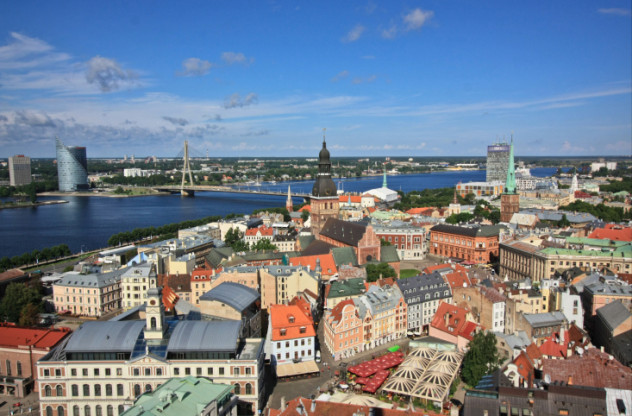
In 1990, Latvia won its independence from the collapsing Soviet Union after 50 years of what was technically an illegal occupation under international law. This allowed Latvia to restore its democratic institutions and its body of law, including the 1919 Law on Citizenship, which protected the status and rights of those recognized as Latvian citizens. However, there were around 730,000 people residing in the country who had immigrated during the Soviet period, permanently resided in the country, and were not entitled to Latvian citizenship. They became known as non-citizens.
They are not stateless people. They enjoy the right to permanent residence in Latvia, equal protection under the law, access to social protections like pensions and unemployment benefits, and they may leave and return to Latvia as they wish. However, they are unable to vote and restricted from working in the civil service or in any position related to national security.
The Latvian government has encouraged non-citizens to apply for citizenship. However, many Latvian non-citizens have complained the process for applying for citizenship is highly ideological. The citizenship test requires applicants pass a test of fluency in Latvian and a test of knowledge about the national anthem, Latvian history, and the national constitution.
One non-citizen, Elizabete Krivcova, told EuroViews, “The exam is very ideological. You have to recognise that Latvia was occupied by Russia. The question about Soviet times are only about its dark side. Concerning the economy, it’s about industrialisation and forced collectivisation in the agrarian sector. When it’s about people life, then it’s about repression. A friend of mine explained me how he prepared it. He said, ‘I know what I think about the history but for the exam I have to think exactly the contrary to have the correct answers.’ ”
Another non-citizen who decided to naturalize still wasn’t happy: “Passing the exam meant that I recognised that I was an immigrant, even though I’m born in Latvia and I have always lived there. It is not my fault if the geopolitical situation changed. So I did it for my son, to avoid him getting this status as well.” The number of non-citizens has now dropped to 280,000, though more of this is due to natural death and emigration to Russia than to naturalization.
1 Intra-Jewish Discrimination
Israel
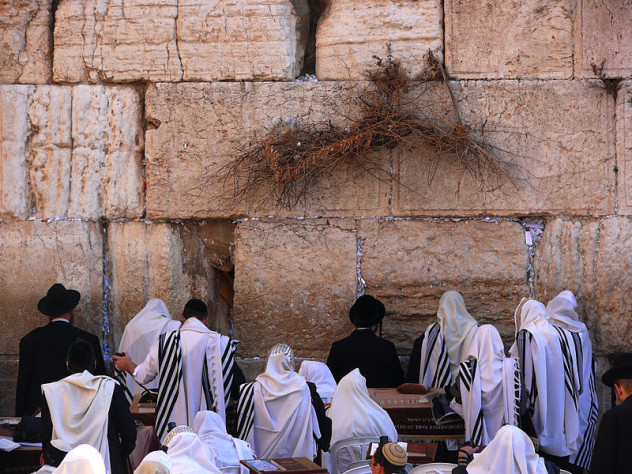
In 1950, Israel passed the Law of Return, which stated every Jew had the right to immigrate to Israel and receive automatic citizenship and a range of benefits including guaranteed housing, Hebrew language study, and full tuition for graduate degrees. However, controversies have cropped up over who counts as a Jew. Issues of race and differences between the different branches of the Jewish faith have complicated the problem.
Many feel elements of the Ashkenazi group, who largely came from European backgrounds, have historically discriminated against Jews of other backgrounds, particularly Mizrahi Jews from the Middle East, Sephardic Jews from Spain and North Africa, and African Jews. Much of this was due to Ashkenazim feelings of superiority over Mizrahim Jews’ Arab cultural roots and their particular form of Judaism, which led to their dismissal and being ridiculed by the economically and socially dominant Ashkenazim. Former Prime Minister David Ben Gurion put it bluntly: “We don’t want Israelis to become Arabs.”
In late 2014, the Israeli Academy of Sciences and Humanities held a conference called “From hating the stranger to accepting the other,” which featured both Jewish and Arab speakers—but neglected to include any Mizrahi speakers. In response, Mizrahi artists, religious leaders, and intellectuals held an alternative conference. The organizer of the latter conference complained, “It’s as if Mizrahim, Arabs, Orthodox Jews, and Ethiopian Jews, who constitute three quarters of the population, are all sitting around and waiting to be accepted.”
While Mizrahi culture has become more prominent, many have complained that Israeli textbooks are written from a European Jewish point of view, dismissing Middle Eastern Jews as backward and somehow less authentic. Research has shown that Mizrahi are underrepresented in Israeli academia, government, and the judiciary, but they make up 60 percent of Jewish prison inmates.
Ashkenazi prejudice against Mizrahi and Sephardi Jews is seen in both the secular and orthodox segments of the population. First Lady Sara Netanyahu was once quoted as saying, “We are Europeans. We are refined [and] don’t eat as much as you Moroccans do.”
Meanwhile, in 2010, a ruckus emerged over Ashkenazi Orthodox Jews who wished to segregate a religious school and were willing to defy a court order to do it, despite increasing numbers of Sephardim who have adopted the Orthodox traditions of Eastern Europe in an attempt to be accepted.
Some now argue the onus is on Mizrahim and Sephardim to assert their Arab roots with pride rather than trying to assimilate into the European Ashkenazim culture where a vocal minority objects to their presence entirely. Some say a movement of Arab Jewish pride could even serve as a cultural shift that may help Israel to achieve a future reconciliation with Palestine.
David Tormsen discriminates against himself, positively or negatively, depending on how much he’s had to drink. Email him at [email protected].
